T-72 operators and variants
The T-72 is a Soviet-designed main battle tank that entered production in 1971. It replaced the T-54/55 series as the workhorse of Soviet tank forces (while the T-64 and T-80 served as the Soviet high-technology tanks). In front-line Russian service, T-72s are being upgraded or augmented by the T-90 (itself, a modernized version of the T-72B). The T-72 has been exported and produced in many countries.
| T-72 | |
|---|---|
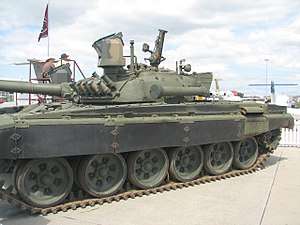 An upgraded T-72 by ATE South Africa features two conspicuous sights | |
| Type | Main battle tank |
| Place of origin | Soviet Union |
| Service history | |
| In service | 1973–present |
| Production history | |
| Designer | Kartsev-Venediktov |
| Designed | 1967–73 |
| Manufacturer | Uralvagonzavod |
| Produced | 1971–present |
| No. built | 25,000+ |
Operators
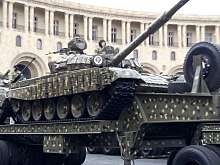
Current operators

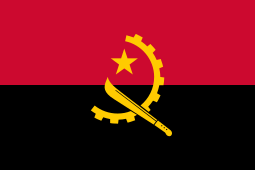

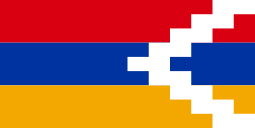




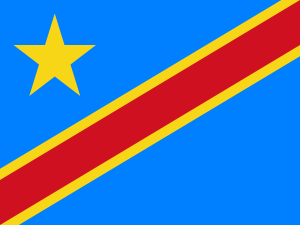
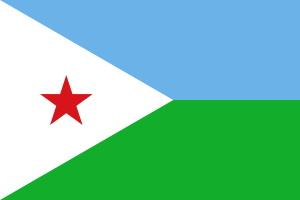

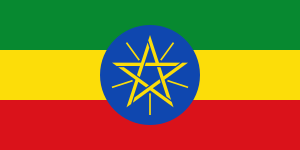






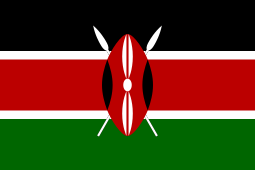
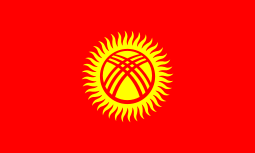
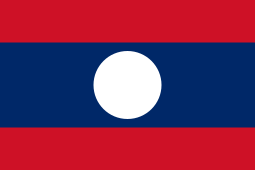
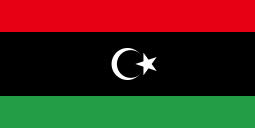

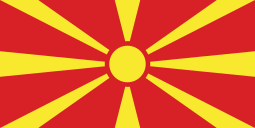



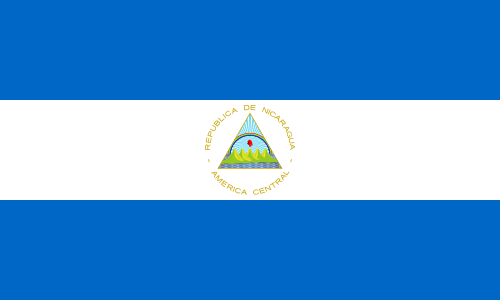





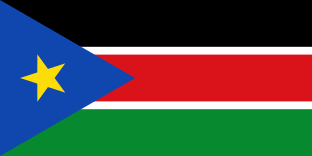


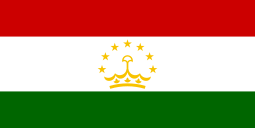
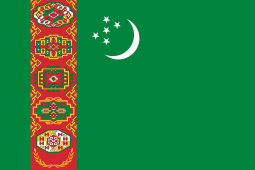
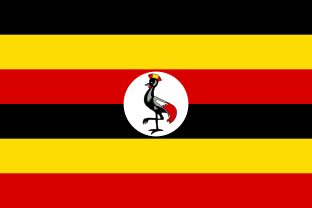

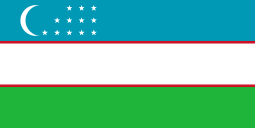

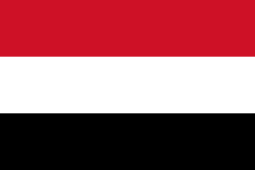
Evaluation / Aggressor Training


.svg.png)

.svg.png)
Former operators
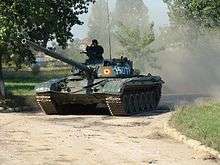

- a)

- b)

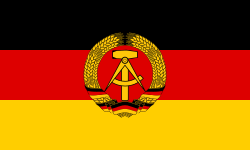
- a)




- a)

- b)

- c)

- d)

- e)

- f)

- g)

- h)

- i)

- j)

- k)

- l)

- m)

- n)

- o)
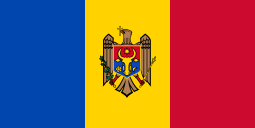
.svg.png)
Variants
Soviet Union and Russian Federation
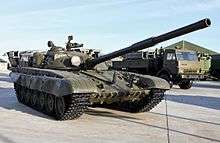
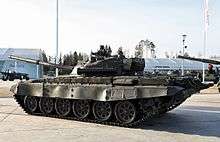
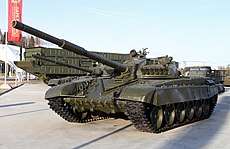
The T-72 was designed and first built in the Soviet Union.
- T-72 "Ural" (Ob'yekt 172M) (1973):[71] Original version, armed with 125 mm D-81TM smoothbore tank gun. Unlike the later versions it had the searchlight mounted on left. It also has flipper type armour panels. It had the TPD-2-49 coincidence optical rangefinder sight protruding from its turret.[2][72][73]
- T-72K: Command version of T-72 "Ural" with an additional R-130M radio. Company command versions were fitted with two R123M/R-173 additional radios and also carried a 10 m telescopic mast. Battalion and regiment command versions were fitted with two R123M/R-173 additional radios and the R-130M that uses the 10 m mast when its erected. In NATO code T-72K was represented by three different designations: T-72K1, T-72K2 and T-72K3 which represented the company command version, battalion command version and regiment command version.[2][73]
- T-72 (Ob'yekt 172M-E, Ob'yekt 172M-E1): Soviet export version armed with 125 mm D-81T smoothbore tank gun with 44 rounds. It was sold to Iraq and Syria and was also built in Poland by "Bumar-Łabędy".[72][73]
- Robot-2: Remote controlled T-72 "Ural".[2]
- Ob'yekt 172-2M "Buffalo": Modernization of T-72 made in early 1970s. The angle of the front armour slope was changed to 30 degrees. 100% metal side-skirts protecting sides of the hull, added armour screens protecting the turret, ammo storage was increased to 45 rounds, modified suspension, added smoke grenade dischargers (SGDs), engine's power was boosted to 840 hp (630 kW).[73]
- T-72 "Ural-1" (Ob'yekt 172M1) (1976):[71] new 2A46 main gun, new armour on the turret.[73]
- T-72V: ("V" for vzryvnoi – explosive) unofficial designator for tanks, fitted with Kontakt-1 explosive reactive armour fitted to hull front and turret.[2]
- T-72 "Ural" modernization. Large numbers of early T-72 production models were modernized in 1980s. The modernization included placing the search light on the right-hand-side of main armament, blanking off the TPD-2-49 coincidence optical rangefinder and fitting of rubber skirts protecting the tracks instead of the flipper type armor panels.[2]
- T-72A (Ob'yekt 176) (1979):[71] An improved version of the basic T-72 "Ural". Overall, its offensive capabilities are similar to the basic T-72 "Ural", but it is much better protected. The differences between T-72 "Ural" and T-72A include the searchlight being placed on the right hand side of turret, the TPD-2-49 coincidence optical rangefinder being replaced by the TPD-K1 laser rangefinder, added plastic armour track skirts covering the upper part of the suspension with separate panels protecting the sides of the fuel and stowage panniers instead of the flipper type armor panels used in T-72 "Ural", the turret front and top being heavily reinforced with composite armour better known by its US codename - "Dolly Parton", provisions for mounting reactive armor, an electronic fire control system, MB smoke grenade launchers, flipper armour mount on front mudguards, internal changes, and a slight weight increase.[2][2][71][73][74]
- T-72A obr.1979g: Additional glacis armour with thickness of 17 mm of high resistance steel.
- T-72A obr.1984g: Late production model with anti radiation lining.
- T-72AK (Ob'yekt 176K): Command version of T-72A. In NATO code T-72AK was represented by three different designations: T-72AK1, T-72AK2 and T-72AK3 which represented the company command version, battalion command version and regiment command version.[2][71][73]
- T-72AV: ("V" for vzryvnoi – explosive) model with Kontakt-1 explosive reactive armour fitted to hull front and turret.[2]
- T-72M (Ob'yekt 172M-E2, Ob'yekt 172M-E3, Ob'yekt 172M-E4): Soviet export version, similar to T-72A but with thinner armour and downgraded weapon systems. Also built in Poland and Czechoslovakia[2][75]
- T-72MK (T-72M(K)): Export version of T-72AK. It is a command vehicle for battalion commanders and has additional radio equipment including the R-130M radio, AB-1-P/30-M1-U generator and a TNA-3 navigation system. The main external difference is a 10 m telescopic antenna stowed under the rear of the stowage box during travel. An additional antenna base for this telescopic antenna is mounted on the left side of the turret. Because of the additional equipment the number of round for the 125 mm tank gun had to be lowered from 44 to 38. In NATO code T-72MK was represented by three different designations: T-72MK1, T-72MK2 and T-72MK3 which represented the company command version, battalion command version and regiment command version.[2]
- T-72M1 (Ob'yekt 172M-E5, Ob'yekt 172M-E6): Soviet export version, with thicker armour and similar to T-72A obr.1979g. It also is fitted with 7+5 smoke grenade dischargers on turret front. (built also in Poland and ex-Czechoslovakia).[75]
- T-72B (Ob'yekt 184) (NATO code: SMT M1988):[74] (1985)[71] (SMT – Soviet Medium Tank) Much improved version with 1A40-1 fire control system, thicker armour, turret front and top was heavily reinforced with composite armour better known by its US codename "Super Dolly Parton", 20 mm of appliqué armour in the front of hull, 9K120 system which gives T-72B 9M119 "Svir" (NATO code: AT-11 Sniper) laser-guided antitank missile capability, new 2A46M main gun, 1K13-49 sight, stabilization system, and a new V-84-1 engine with 840 hp (626 kW). On early models the smoke dischargers were mounted on the turret front (as per T-72A), later they were grouped on the left side of the turret to prepare for the installation of ERA bricks.
- T-72BA ERA: fitted with 227 "Kontakt-1" ERA bricks to the hull and turret. The glacis plate and turret is covered with a layer of single ERA blocks and the turret's bottom row is mounted horizontally. There's also an ERA array on the sideskirts. They're often incorrectly called T-72BV.[2]
- T-72S "Shilden" (T-72M1M1,[72] Ob'yekt 172M-E8): Export version of T-72B with only 155 ERA bricks, simplified NBC system, no anti-radiation lining etc.
- T-72B1 (Ob'yekt 184-1): T-72B without ATGM capability and with the T-72A's optics.
- T-72B1 fitted with "Kontakt-1" ERA. It has eight SGD on left-hand-side of the turret and explosive reactive armour on turret and hull front.
- T-72B1K (Ob'yekt 184K-1): Command version of T-72B1.[73]
- T-72B1 (Ob'yekt 184-1): T-72B without ATGM capability and with the T-72A's optics.
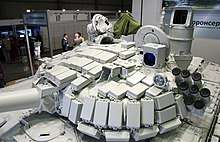
- T-72B1MS "White Eagle"(Ob'yekt 184-1MS): T-72B1 modernized by Oboronprom company (now part of Rostec), first unveiled at International Forum Engineering Technologies 2012, painted all white, hence the unofficial nickname "White Eagle". Mechanical properties of the tank are the same as regular T-72B1, with the same engine, weapon, armor and K-1 ERA package. However, electronics are heavily upgraded, including a front and rear camera for the driver, driver digital display, GPS/GLONASS navigation system, third generation thermal panoramic sight "Eagle's Eye" for tank commander mounted at the rear left side of the turret, Sosna-U thermal gunner sight, target-tracking system, chassis management system, remotely controlled AA machine gun and more.[76][77] Currently in service with Laos,[78] Uruguay[79][80] and Nicaragua[81] armed forces, Serbia being a possible customer too.
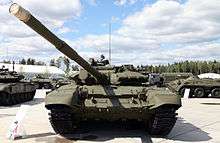
- T-72B obr.1989g: T-72B equipped with advanced Kontakt-5 explosive reactive armour, composite armour in sides of turret as well. Often called T-72BM or T-72B(M) but this is not correct. NATO code: SMT M1990.[2][73]
- T-72B obr.1990g: Additionally fitted with new FCS, cross-wind sensor and sometimes V-92S2 engine.
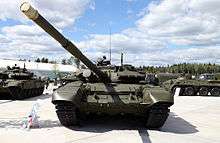
- T-72BA (Ob'yekt 184A/A1): this designation is used to refer to several models of late model T-72B, stripped-down, refurbished and upgraded with certain core components at Uralvagonzavod between 1998-2005. Because the upgrade was performed on various vintages of T-72B with varying levels of ERA protection, there is significant variation between T-72BA vehicles. There are however several features common to all upgraded T-72BA models; the frontal hull floor plate was reinforced against mines, the driver's seat is now suspended from the ceiling instead of being fixed to the floor and the driver's station has a new steering system as well as a new TVN-5 night sight. These tanks are equipped with the V-84MS engine using an upgraded exhaust system and newly developed twin-pin tracks (used on the T-90A). The upgrade also included the integration of a DWE-BS wind sensor whose mast is located on the rear, left part of turret and which feeds information into the 1A40 fire control system automatically. Tanks upgraded after the year 2000 received an improved 1A40-01M fire control system which makes use of a TBV digital ballistic computer. The tanks can also fire the 9M119M Refleks laser-guided anti-tank missile through the use of a 1K13-19 sight. The most recent T-72BA tanks made in 2005 feature the latest iteration of the 1A40 FCS, designated 1A40-M2. While the upgraded tanks retained the original 2A46M main gun, more importantly, they received a much improved 2E42-4 stabilization system which significantly improved accuracy - especially during firing on the move. Approximately 750 tanks were upgraded to the T-72BA standard.[82][83]
- T-72B2 Rogatka obr.2006g (Ob'yekt 184M) (also referred to as T-72BM in documents[83]): T-72B upgrade proposal code-named Rogatka. First shown at the 2006 Russian Arms Expo, it is equipped with a new fire control system including a gunner's thermal sight, Nakidka camouflage kit, a new 125 mm 2A46M-5 main gun with muzzle reference system, V-92S2 1,000 hp diesel engine and the new Relikt 3rd generation ERA which is claimed to be twice as effective as Kontakt-5.
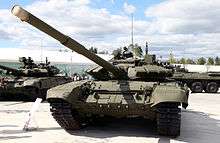
- T-72B3 (Ob'yekt 184-M3): this upgrade was initiated in 2010 using old stocks of T-72B tanks held in reserve. In addition to performing a general overhaul of every vehicle, certain tanks were equipped with the more powerful V-92S2 engines, a new steering system in the driver's compartment and older tracks were replaced with the new universal, twin-pin design. The upgrade program focuses instead on improving the tank's firepower, mainly through the implementation of the Kalina fire control system, albeit in a simplified form. The tank commander retains an upgraded version of the legacy TKN-3MK sight, which is a passive device with a range of only 600 m at night, but is augmented with a monitor that displays thermal imagery from the gunner's main sight. The commander also has a new turret control panel. The gunner still has the 1A40-4 FCS with 1K13-49 sight, but these are now part of the auxiliary sighting system to complement the new PNM Sosna-U panoramic multi-spectral sensor, which replaced the TPN-3-49 in its mounting. The Sosna-U is a multi-channel, panoramic sight stabilized in both vertical and horizontal axes with a built-in laser rangefinder and command guidance module used with 9M119M missiles. The most advantageous aspect of the Sosna-U is the Thales Catherine-FC thermal imager which extends the detection and identification range of a tank-sized target to 10,500 m and 2,200 m respectively, at night/day and in all weather combat conditions. The T-72B3 series vehicles also received the new 2A46M5 main gun which has a dispersion value significantly lower than previous generations, and reportedly equivalent to the Rheinmetall Rh120 L/44 cannon. The gun laying and stabilization drives were also replaced with the new 2E42-4 system and the AZ ammunition auto-loader was appropriately modified to accommodate newer generations of long-rod (up to 730 mm) saboted kinetic energy anti-tank ammunition: the Svinets-1 (using a depleted uranium penetrator) and Svinets-2 (sintered tungsten alloy) rounds, which were fielded in 2002 and reportedly capable of defeating 740–800 mm and 660–740 mm of RHA at 2,000 m respectively. Only the most recent T-72B3 tanks however feature this capability. Furthermore, the B3 upgrade includes a new explosion and fire suppression system, as well as an advanced VHF radio system designated R-168-25U-2 AKVEDUK. Entered service on 19 October 2012. First delivered to the 20th Field Army in summer 2013 and its Armored Guards Brigade in October 2013. About 2,000 such tanks are currently in service.[39][84][85][86][87][88][89] Gun 2A46M-5 (2005) for the T-72B3 (2012). Artillery range 9.6 km (normal max), 7.5 km its own sight, the missile 5 km, APFSDS 4 km. Accuracy of + 20%.[90] Unmanned version of T-72B3 is under development.[91]
- T-72B3M: This is a special version of the T-72B3 tank, made specifically for Tank Biathlon 2014. It has an individual commander sight on top of the turret
- T-72B3 obr.2016: The most recent variant of the T-72 fielded by the Russian army since 2016.[92] Ammunition includes advanced projectiles. A large amount of reactive armor (analog to T-90MS). New radio communication. New panoramic sight. Increased protection against mines. A new fire control system.[93][94] The most notable upgrade is the stabilized, panoramic, independent commander's PK PAN sight with integrated thermal viewer, thought to have similar specifications to the Sosna-U. The automotive performance of the tank was also improved with a more powerful V-92S2 engine rated at 1,130 hp (830 kW) coupled to an automatic transmission system and improved drivetrain.[95][96] Relikt new generation ERA was installed. The Russian Defense Ministry has purchased several hundred T-72B3M tanks and received the first 20 in early 2017.[97][98]
- BMO-T (Boyevaya Mashina Ognemyochikov) – This is a transport vehicle for flamethrower-squads armed with RPO launcher.[2] Entered service in 2001.[99]
- BMPT (Ob'yekt 199) – Heavy convoy and close tank support vehicle (Boyevaya Mashina Podderzhki Tankov). All new turret armed with 2 30 mm 2A42 autocannons (500 rounds), 1 boxed 9M133 Kornet ATGM launcher on left-hand-side of weapons mount (4 rounds), AGS-17/30 30 mm grenade launchers and a 7.62 mm PKT MG (2,000 rounds). It be also fitted with either 2 7.62 mm PKT MGs or 30 mm AGS-17/30 as bow weapons and a 902A "Tucha" 81 mm smoke grenade launcher array. Features new fire control system with thermal sights and a ballistic computer and 3rd generation "Relikt" explosive reactive armour and "Kaktus" modular armour. It is equipped with Agat-MR passive and thermal night vision devices, an NBC detection and protection system, a crosswind sensor and parts of the KAZ "Shtora" active protection system. The vehicle can be fitted with either the KMT-8 or the EMT mine clearing system. It also has the engine from T-90A.[2] The term BMP-T that is very often found is not correct.
- TOS-1 – Large box-type multi-barrel rocket launcher with 30 tubes that replaces turret.[2]
- TZM-T – Reloading vehicle for the TOS-1 mobile multi-barrel rocket launcher.[2]
- BREM-1 (Bronirovannaya Remonto-Evakuatsionna Mashina) – Armoured recovery vehicle with a hydraulic crane with capacity of 12 tonnes mounted at the front of the hull on the left side. It also has a main winch with capacity of 25 tons which can be increased to 100 tonnes, auxiliary winch, hydraulically operated dozer/stabilizing blade at the front of the hull, towing equipment and a complete range of tools and recovery equipment.[2][100]
- IMR-2 (Inzhenernaya Mashina Razgrashdeniya) – Combat engineering vehicle (CEV). It has a telescoping crane arm which can lift between 5 and 11 metric tons and utilizes a pincers for uprooting trees. Pivoted at the front of the vehicle is a dozer blade that can be used in a V-configuration or as a straight dozer blade. When not required it is raised clear of the ground.[2] On the vehicle's rear, a mine-clearing system is mounted.
- IMR-2M1 – Simplified model without the mine-clearing system. Entered service in 1987.
- IMR-2M2 – Improved version that is better suited for operations in dangerous situations, for example in contaminated areas. It entered service in 1990 and has a modified crane arm with bucket instead off the pincers.
- IMR-2MA – Latest version with bigger operator's cabin armed with a 12.7 mm machine gun NSV.
- Klin-1 – Remote controlled IMR-2.[2]
- MTU-72 (Ob'yekt 632) (Tankovyj Mostoukladchik) – bridge layer based on T-72 chassis. The overall layout and operating method of the system are similar to those of the MTU-20 and MTU bridgelayers. The bridge, when laid, has an overall length of 20 meters. The bridge has a maximum capacity of 50,000 kg, is 3.3 meters wide, and can span a gap of 18 m. By itself, the bridge weighs 6400 kg. The time required to lay the bridge is 3 minutes, and 8 minutes for retrieval.[2]
- BMR-3 (Bronirovannaja Mashina Razminirovanija) – Mine clearing vehicle.
- RKhM-7 "Berloga-1" (Razvedivatel'naya Khimicheskaya Mashina) – NBC reconnaissance vehicle without turret and with fixed superstructure.
- Ob'yekt 327 – Self-propelled 152 mm gun. Prototype only.
Bulgaria
Croatia
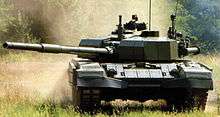
- M-84D – modern upgrade of the M-84A4 with technology developed for M-95 Degman.
- M-95 Degman – 3rd generation tank based on the Yugoslav M-91 Vihor prototype.
- M-84A4 -The M-84 is a Yugoslav third generation main battle tank, a variant of the Soviet T-72, produced in Croatian Đuro Đaković specijalna vozila.
Czech Republic
- T-72M4 CZ: the Czech T72M4 CZ is a comprehensive upgrade of every aspect of the T-72M1 resulting in a tank that only superficially resembles the precursor. The automotive performance was enhanced with a Perkins CV12-1000 1,000 hp (740 kW) water-cooled diesel engine coupled to an Allison XTG-411-6 automatic transmission. All drive train work was done by the Israeli firm NIMDA and involved extensive modification of the tank's hull and the driver's compartment. The upgrade added new Czech-manufactured Dyna-72 ERA for protection against HEAT and kinetic rounds impacting the frontal aspects of the turret and hull, and against top-attack ATGMs and sub-munitions with ERA tiles covering the turret roof. Survivability is enhanced with the Polish-made Obra laser warning system integrated with a series of DGO-1 smoke grenade dischargers on each side of turret, a Deugra fire suppression system, REDA NBC suite and electromagnetic mine plow. The most important improvement in firepower comes from the use of the Galileo Avionica TURMS-T computerized FCS (it is similar to that used in C1 Ariete) which enables a "hunter-killer" mode of operation; the commander has a panoramic day/night sight with built-in laser rangefinder and Attila thermal camera and can engage targets independently, while the gunner has his own primary sight with thermal channel. The FCS has sensors that correct for thermal distortion of the barrel, the temperature of the ammunition propellant, meteorological conditions, totaling 22 sensor clusters installed at several points on the turret. A new 125/EPpSV-97 APFSDS round was developed for use with the new tank which can defeat 540 mm of RHA at 2,000 m. The Czech tanks were also equipped with a rear-view camera, a new intercom, navigational system, the DITA 72/97B auto-diagnostic system and improvements to the suspension due to the increase in the weight of the T-72M4 CZ by 4 tonnes. Curiously, the obsolete 2A46 main gun was retained as was the original 2E28M stabilization system, which was modestly upgraded with new hydraulic drives and gyroscopic sensors, resulting in only marginal improvements in first-hit probability despite the sophisticated and expensive TURMS-T FCS. The published probability of hitting a stationary target on the move is said to be between 65-75% with the first fired round. In comparison, the Leopard 2A4 from the mid-1980s can achieve a first round hit probability on the move of 75-85% at 2,000 m and as high as 90% with a skilled crew. The original tender called for an order of 350 tanks, which was downgraded to 140 in the face of dwindling defense budgets and finally amounted to a commitment for only 35 tanks to be upgraded to the T-72M4 CZ standard. One of the reasons for this drastic reduction was due to the escalating unit cost of the upgrade—from an initial estimate of US$3.7M—and closing on a final cost of US$5.2M per tank. The reliance on foreign components and labour has also taken the original Czech contractor to the verge of bankruptcy, and the program is considered a failure by analysts according to cost-effectiveness metrics.[101]
- VT-72M4: Modernized VT-72 (BREM-72) ARV with T-72M4CZ upgrades including the power pack and communications upgrades.[2]
- T-72 Scarab: modernization of T-72M1 by Czech company Excalibur Army.[102]
Finland
- T 72 FINMOD 1 – Upgrade program started in 1989, the upgrade included a new power plant that allowed faster turning and reverse, also a new FCS like in the Finnish upgraded T-55M as well as a new ammunition, this first stage upgrade being the budget upgrade, other upgrades included Thermal imaging for the gunner. At least one T-72M1 was upgraded to FINMOD 1 level.[103]
- T 72 FINMOD 2 - Second stage upgrade, contained everything from the first stage upgrade, but in this stage 2 upgrade the tank also got ERA armor (Kontakt-1), and possible new loader for long rod APFSDS shells. AT least one T-72M1 was upgraded to FINMOD 1 level, however whether the ERA Kontakt-1 was mockup tested or fully tested with real Kontakt-1 is unknown until the FINMOD programs is unclassified.[103]
- T 72 FINMOD 3 - Third Stage upgrade, and the most costly one. This included a new main gun, new fire control- system, night sights/thermals, add-on armor, SALH missile capability, laser/radar warning system like the Israeli late 80's systems. Add-on armor would be from MEXAS/AMAP and the new engine would be a Finnish Wärtsilä 1000HP X8 engine + a French RENK ESM-350 transmission.[103] According to the people involved with this project, the tank would be similar in looks to the T-55AGM, or a M-95 Degman's hull combined with T-80U's turret, armor effectiveness would also be in between Leopard 2A4 and 2A6. All parts were ready for assembly however no T-72 FINMOD 3's were fully completed.
Former East Germany
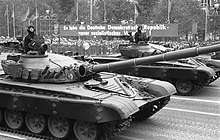

- T 72M – This designator was not only used for the standard T-72M, but also for 75 basic T-72s that were upgraded by RWN in 1986. These tanks (Kampfpanzer) were fitted with rubber side skirts, smoke grenade launchers "Tucha" and the additional 16 mm steel plate on the upper glacis plate.[64]
- T 72M "Übergangsversion" – East-German army designator for 23 late-production T-72Ms from Poland, fitted with the additional hull armour. Delivered in 1986.
- T 72(K) and T-72(K1) – East-German army designators for command tanks (Führungspanzer).
- T 72TK – East German designation for VT-72B (BRAM-72B). The vehicle was planned to enter service with NVA in 1990, but only one was actually handed over to IB-9 (Instandsetzungsbatallion 9) at Drögeheide (Torgelow). Two others were still in Grossenhain (Central tank workshop near Dresden) on 3 October 1990. At this place the tanks got fitted with relevant NVA kit and the cranes were tested/certified.[2]
- BLP 72 (Brückenlegepanzer) – The East-German army had plans to develop a new bridgelayer tank that should have been ready for series production from 1987 but after several difficulties the project was canceled.[104]
- FAB 172M or FAP 172U (Fahrausbildungspanzer) – Driver training vehicle. Three vehicles were made by using the chassis of the cancelled BLP 72 project.
Former Czechoslovakia
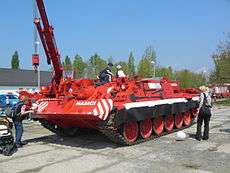
- T-72M (Ob'yekt 172M-E3) – This model was built under licence by ZTS Martin. In Western sources it is often referred to as T-72G which might be the designator for the version exported to the Middle East. In the late 1980s the tanks produced for the Czechoslovak army and for export as well were fitted with some improvements from the Soviet T-72A programme, including rubber side skirts (instead of "gill armour") and 902B "Tucha" smoke grenade launchers.
- T-72M1 (Ob'yekt 172M-E5) – This export version of the T-72A was also built by Martin. An external difference with the Soviet original is the reduced number of KMT mounts on the lower glacis plate.
- VT-72 (BRAM-72) (vyprošťovací tank) – Czechoslovak armoured recovery vehicle based on T-72 chassis.[105]
- VT-72B (BRAM-72B) – Czechoslovak ARV based on BREM-1 with dozer blade with prominent rams mounted on the front of the vehicle, hydraulic crane on the right side of vehicle and a large built-up superstructure at the front of the hull with a large tackle block in front of it.[2]
Georgia
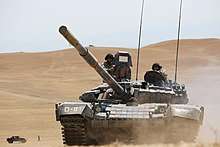
- T-72 SIM-1 – Increased implementation of K-1 reactive and K-5 passive armor. New FALCON command and control system, GPS navigation system and Polish SKO-1T DRAWA-T fire control system with thermal imager and laser rangefinder (from PT-91 Twardy).[106] It has also a friend-or-foe recognition system.
India
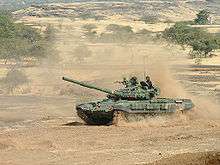
By the late 1970s, Indian Army HQ had decided to acquire new-generation replacements for its UK-origin fleet of Royal Ordnance Factories-built Centurion and Vijayanta MBTs, which are based on the licensed production of the Vickers MBT, and consequently, paper evaluations concerning the firepower and mobility characteristics of the two principal contenders being offered for full in-country production—AMX-40 developed by GIAT Industries of France, and the Chieftain 800 (which later evolved into the Challenger 1 from Royal Ordnance Factories (then owned by British Aerospace PLC)—were conducted by the Indian Army. Between these two contenders, the Army had by early 1980 zeroed in on the 43-tonne AMX-40 MBT, which was still on the drawing boards and was meant to be powered by a 1,100 hp Poyaud V12X 12-cylinder diesel engine coupled with a LSG-3000 automatic power shift transmission built by RENK Aktiengesellschaft of Germany (offering a power-to-weight ratio of 25.6 hp/tonne, and armed with a 120 mm smoothbore cannon. However, AMX-40 had only marginal protection by the standards of 1980's. After coming back to power, the Indian Prime Minister Indira Gandhi requested additional evaluation, including MBTs from the USSR, following which the Soviet Union's Ministry of Foreign Economic Relations (which after 1991 morphed into Oboronexport, then Rosoboronservice and ultimately Rosoboronexport State Corp) made a formal offer to India's Ministry of Defence (MoD) for supplying the 37-tonne T-72M Ob'yekt 172M-E4 MBT off-the-shelf, and according an approval for licensed-production of the 41.5-tonne T-72M-1982 Ob'yekt 172M-E6 to the MoD-owned Heavy Vehicles Factory (HVF) in Avadi. By early 1981, two T-72Ms—powered by a 780 hp diesel engine, armed with 125 mm 2A46M smoothbore gun and offering a power-to-weight ratio of 20 hp/tonne, were subjected to an exhaustive series of in-country firepower and mobility trials by the Army. After review of trial results, T-72M and T-72-1982 (powered by a Model V-84MS four-stroke 12-cylinder multi-fuel engine developing 840 hp and offering a power-to-weight ratio of 18.8 hp/tone) were selected as Army's future MBTs, and a procurement contract for 2,418 T-72s was subsequently inked.[107]
- Ajeya MK1 – Indian version of the T-72M1. In parallel with buying various T-72M off-the-shelf from the Soviet Union, India also launched its domestic production at Heavy Vehicles Factory.[2]
- Ajeya MK2 – Indian version of the T-72M1 with ERA and banks of 6 smoke grenade-launchers on each side.
- Combat Improved Ajeya For a rather long time the Indian Army did not intend to modernize its T-72 tanks since it was relying on their own tank project the Arjun. However, the Arjun program had been undergoing difficulties. As a result, they adopted the Operation Rhino plan aimed at re-equipping 1,500 T-72M1 tanks. The upgrade program provides for installation of a Polish SKO-1T DRAWA-T fire control system/thermal imager supplied by the Polish PCO/Cenzin (from PT-91 Twardy), DRDO explosive reactive armour, a navigation system from Israel's Tamam, German Litef or South African RDI, a locally developed laser illumination warning system, new radios manufactured by Tadiran or GES Marconi and an improved NBC protection system will be fitted. The tank is planned to be powered by a 1,000 hp (750 kW) S-1000 engine made by the Polish firm PZL-Wola (also from PT-91 Twardy). It is also upgraded with new fire detection and suppression systems and laser warning systems on either side of the turret. Indian sources often say that 1,800–2,000 T-72M1 tanks will be upgraded top to bottom while the rest will undergo only partial improvement.[2]
- Tank EX – Indian integration of the Arjun turret onto the T-72 hull, Prototype only. Did not enter production as it was rejected by the Indian Army.
Iraq
- T-72 Ural (1973)
- T-72M and T-72M1
- Lion of Babylon (Asad Babil) – Iraqi-assembled version of the T-72M1
- Saddam – T-72M modified by Iraq to suit local conditions. Some of the suspension shock absorbers were removed and a searchlight on right-hand-side of main armament was added.[2]
Syria
- T-72 "Adra" – Syrian domestic upgrade featuring slat and spaced armour as extra protection against HEAT.
- T-72S "Sniper" – Syrian-Italian upgrade adds Galileo Avionica TURMS-T computerized FCS, and improve tank protection by adding Kontakt-1 ERA.
- Golan-1000 – Syrian new rocket system which carries three massive 500 mm rounds, each packed with 500 kg of high-explosive fragmentation ammunition. Built on a T-72 tank chassis, the new rocket system has already been put into service with the Syrian Army as of May 2018.[108][109][110]
Poland
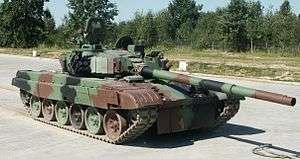
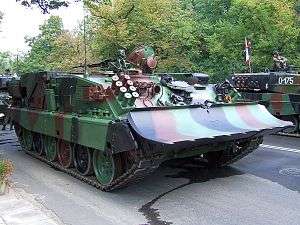
- T-72M/T-72M1 - licensed, standard T-72 models produced in Poland
- T-72M (Ob'yekt 172M-E3): this model was built under licence by Bumar-Łabędy in Gliwice starting in 1982. Like Soviet tanks, the Polish T-72M was initially fitted with "gill" armour; later the tanks were upgraded with rubber side skirts and 902W Tucha smoke grenade launchers. Late production models have an additional 16 mm steel plate welded on the upper glacis plate, like in the T-72M1.
- T-72M1 (Ob'yekt 172M-E5): this export version of the T-72A was also built under licence in Poland since 1983. The most obvious external difference relative to Soviet analogs is the reduced number of KMT mounting points on the lower hull glacis plate. This is the 1st version to feature ceramic sand bars "kwartz" rods in the turret cavity and 16 mm (0.63 in) High Hardness Steel appliqué armor on upper glacis.
- T-72M1D: Polish designation for T-72M1K.[71]
- PT-91 Twardy: an extensive Polish upgrade based on T-72M1 developed sometime between the late 1980s and early 1990s and involving use of a new digital fire-control system, proprietary ERA and an uprated powerplant. This formed the basis for a whole line of derivative vehicles. PT-91 was a result of previous T-72 upgrade programs:
- Jaguar: when Polish production of the T-72 started in 1982, the Poles considered upgrading them and the first domestic T-72 upgrade program was launched by the Institute of Armament and Equipment of the Polish Army. The project was code-named Jaguar since that was the designation under which the Soviet Union transferred the technical data package for the T-72. The Jaguar was never more than a concept.[2]
- Wilk: beginning in 1986, the Polish T-72 Wilk project was instituted to allow tank repair plants to upgrade T-72 tanks within their own facilities. In particular, it was proposed that the Soviet-made Volna fire control system be replaced by the Czechoslovak-made Kladivo FCS or by the Polish SKO-1 Mérida, which was originally designed for T-55AM "Merida". Besides the new FCS, the Radomka passive night vision devices were installed in the driver's compartment, as was the Liswarta night sight, Obra laser illumination warning system, Tellur anti-laser smoke grenade launchers, solid or modular metal side skirts and the Polish-developed Erawa-1 or Erawa-2 explosive reactive armour was also fitted. This program was further developed and led to the PT-91.
- PT-91M Pendekar — production export variant for Malaysia with Sagem Savan-15 fire control system, a new 1,000 hp powerpack with Renk automatic transmission bringing its top speed to 70 km/h. Its main gun have been changed to a ZTS 2A46MS 125 mm gun, a 7.62 mm FN MAG coaxial machine gun and a 12.7 mm FN Browning M2 HB AA machine gun. This variant is also equipped with Sagem panoramic sight, a Sagem laser gyro inertial navigation system, turret stabilisation system, Obra-3 laser-warning system, integrated with 81 mm smoke grenade launchers, CBRN warning and protection system, Thales communication systems. ERAWA 2 Explosive Reactive Armour, and German-made tank tracks (Diehl Defence). Two prototypes made (renamed PT-91E and PT-91Ex), 48 serial PT-91M Malaj vehicles produced 2007–2009.
- WZT-3: ARV based on the T-72M. It is armed with a 12.7 mm (1⁄2 in) machine-gun fitted to the commander's hatch. Standard equipment includes: crane with telescopic jib that can lift a maximum load of fifteen tonnes, front-mounted stabilizing dozer blade, main and secondary winches.[2]
- WZT-3M: A PT-91 based variant for Polish Army
- M-84AI: A M-84A based variant, made on licence in Yugoslavia – 15 vehicles for Kuwait
- ARV-3: A T-72 based variant for Indian Army – 352 vehicles made
- MID Bizon-S: engineering tank based on the PT-91 tank hull
- MID-M: A PT-91M based variant for Malaysian Army
- WZT-4: Armoured recovery vehicle, PT-91M based variant for Malaysian Army (technically this vehicle is closely related to MID-M, not the WZT-3)
- SJ-09: Polish driver training vehicle. The turret has been replaced by a flat-plate cabin with dummy gun barrel. Polish army uses T-72 based vehicles, Malysian Army has one based on PT-91M.
- PZA Loara: SPAAG prototype based on the T-72 chassis.[2]
Romania
- TR-125 – Romanian tank based on T-72 with extra armour, new FCS, new gun, modified suspension and more powerful diesel engine.
Serbia
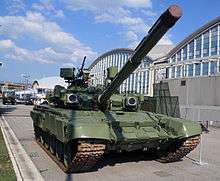
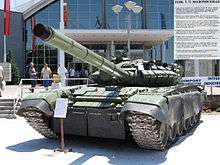
- M-84AS – An M-84A tank modernized to T-90 level by Yugoimport SDPR.
- M-84AI – Armoured recovery vehicle created from the chassis of a M-84A. Completed with the help of Polish experts, resulting in a vehicle similar to the WZT-3. Standard equipment includes: A TD-50 crane, front-mounted stabilizing dozer blade, main and secondary winches.
- Yugoimport T-72 modernization package – Upgraded engine, communication gear and ERA.
Slovakia
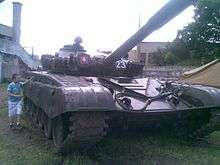
- T-72M1A – T-72M1 upgraded with suspension of the driver's seat from hull roof, DSM 16.1 engine monitoring system, ERA armour package around the turret with a flat front section, fire detection and suppression system, improved transmission, improved hull floor protection, laser Detection Warning System, modified electrical harness, PNK-72 driver's night sight, SGS-72A commanders stabilized passive sight, gunner's sight with a large head with two section door, S12U diesel engine, Slovenian EFCS3-72A fire control system and MB smoke grenade dischargers on the each side of the turret. It also has two external sensor rod mounts on turret roof.[2]
- T-72M2 – Slovak modernisation. Development was completed but without any order for tank fleet modernisation.
- VT-72C – Improved VT-72B produced since 1999 for India. It is fitted with a more powerful Polish S-12U diesel engine and has a modified interior.[2]
- VT-72Ž – Combat engineer tank. Similar to the VT-72B but with a modified telescopic arm with bucket.
- MT-72 – Slovakian scissors-type bridge based on T-72 chassis. When deployed the bridge is 20 m long and will span a gap of 18 m. It is capable of carrying loads of up to 50 tonnes.[2]
- ShKH 2000 "Zuzana" (Zuzanne) – A 155 mm (45 calibers) version (the first prototype of which was completed by ZTS in December 1992) of the Dana 152 mm self-propelled gun-howitzer installed on a modified T-72M1 chassis.[2]
Yugoslavia
- M-84 – Indigenous design based on the T-72M but with several upgrades.
- M-84A – Improved version based on the T-72M1, with new SUV-M-84 computerized fire-control system, including the DNNS-2 gunner's day/night sight, with independent stabilization in two planes and integral Laser rangefinder. Other upgrades include a stronger 1,000 hp engine.
- M-84AK – Command version of M-84A fitted with land navigation equipment.
- M-84AB – Export version of M-84A. About 150 were exported to Kuwait.
- M-84ABK – Command version of M-84AB fitted with land navigation equipment.
- M-84ABN – Navigation version of M-84AB fitted with extensive communication equipments, land navigation equipment, and a generator for the command role.
South Africa
- T-72 "Tiger" – The modernization package from LIW includes two large sights installed on the front of the turret.[2] South Africa also offers a self-propelled artillery conversion for existing T-72s, rearming the chassis with a turret adopted from the G6 howitzer.[111]
Ukraine
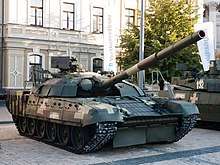
- T-72AM "Banan": unveiled in 1992, the first Ukrainian T-72A upgrade covered extensively with early generation Kontakt-1 ERA tiles (V-shaped array around the sides of the turret and an array on side skirts). It is powered by the 6TD-1 or 6TD-2 diesel engine (1,250 hp) from the T-84 and features additional smoke grenade launchers.[2][74]
- T-72AG: Kharkiv Morozov Machine Building Design Bureau (KMDB) modernization package aimed at improving the automotive and firepower capabilities of the tank with components mostly derived from the T-80UD program, including an improved 6TD-1 engine rated at 1,000 hp or 1,200 hp (881 kW) 6TD-2, new drivetrain components from the T-80UD, an improved engine cooling system, turbocharger and air filter. These upgrades improve upon the T-72B tank's mobility and bring the upgraded vehicle up to par with the high performance T-80UD. Further improvements were made to the fire control system, which is now an adaptation of the 1A45 Irtysh system, with 1G46 day sight, TKN-4S, TPN-4 or TPN-4 Buran-Catherine nights sights (the latter equipped with thermal viewer) which also enables firing 9M119M Invar laser-guided missiles launched from the main gun. The tank turret was covered in Kontakt-5 ERA tiles and the main gun was upgraded to the newer 2A46M1 variant, and coupled with a significantly more precise 2E42M main gun stabilization system. However, with most of the tank's components reliant upon the T-80UD—which is not in service anywhere outside of Russia and Ukraine—this variant has not had any export success.[112][113]
- T-72MP: This modernization package was unveiled in 1997 by KMDB and includes an improved 6TD-1 engine, Kontakt-5 or Nozh ERA, a modern fire suppression system and an advanced Sagem SAVAN 15MP fire control system with the multi-channel thermal SAVAN 15MP (gunner) and panoramic SFIM VS580 (commander) sights. But the capabilities of the FCS were not fully utilized since the tank retained the obsolete 2E42-2 stabilization system and 2A46M main gun. The upgrade is offered jointly with Sagem of France, and PSP Bohemia of the Czech Republic.[114]
- T-72-120: KMDB main armament package first offered in 1999 with the T-72AG or -MP upgrades, which includes an auto-loaded KBM-2 120 mm main gun, developed with the French-based GIAT Industries and capable of firing NATO-standard ammunition or ATGMs. This upgrade includes a new 2E42-M stabilizer and a new auto-loader system housed in the redesigned turret bustle and similar to that used in the Leclerc main battle tank with a capacity of 20 single fixed rounds and further 20 stored in the hull in place of the legacy AZ auto-loading mechanism. The high costs involved with such an extensive modification have thus far driven away potential buyers.[115]
- T-72UA1: this is a relatively simple upgrade developed for smaller defense budgets of the nations of the developing world, but one that has seen commercial success. The original V-46 engine was replaced with a newer 5TDFMA two-stroke diesel making 1,050 hp (775 kW) and fitted with an enhanced cooling system for use in tropical environments, which allows the tank to be operated for extended periods at temperatures exceeding 55 °C. The tank was also equipped with an EA-10-2 APU with an output of 10 kW, allowing the vehicle's systems to be fully powered when stationary without running the main engine, thus drastically reducing fuel consumption. An air-conditioner remains optional. Protection is enhanced with the use of Nozh ERA tiles on the turret while retaining the Kontakt-1 tiles on the hull (however Nozh tiles are compatible with Kontakt-1 mounting points and can be retro-fitted). The main gun, stabilizer and FCS remain unchanged compared to the T-72B. Ethiopia purchased the T-72UA1 with 72 tanks delivered in 2011 and 99 in 2012. The Ukrainian army became a customer in 2014 in response to an immediate need following the eruption of the War in Donbass. It is believed that less than 30 vehicles were ordered.
- T-72E: upgraded version of the T-72B ("E" stands for "Export") showed at IDEX 2011 and developed together with the T-64E. The hull front and sides are protected by Kontakt-1 ERA boxes, while the turret front, sides (sides' frontal part) and top is homogeneously protected by Nozh armor. The engine is upgraded, it is an 5TDFMA-1 multi-fuel diesel engine, developing 1050 hp. The tank features also air conditioning, day-and-night sighting system with integrated laser rangefinder and ATGM capability. The weight is 42.7 t, giving the tank a power/weight ratio of 24,6 hp/t.
- BMT-72 – Ukrainian T-72 upgrade. The unique compact design of the Ukrainian-developed BMT-72 power pack, based on that of the T-84, made it possible not only to considerably increase the power capabilities of the vehicle, but also to introduce into the vehicle design a troop compartment. The troop compartment is located between the fighting compartment and the power pack compartment. In the troop compartment roof there is a set of three hatches in slightly raised portion of the hull roof behind turret that allow the troops to get in or dismount the vehicle. There are also steps on the end of each catwalk at rear of vehicle. The main visual difference between BMT-72 and T-72 is a seventh pair of roadwheels.[2][116]
- BTS-5B – Ukrainian version of the BREM-1.
- T-72AMT – Adapted to fire Kombat laser-guided missiles from its main gun, as well as several other survivability and lethality enhancements.[117][118]
Notes
- Binnie, Jeremy; de Cherisey, Erwan (2017). "New-model African armies" (PDF). Jane's. Archived from the original (PDF) on 22 June 2017.
- "JED The Military Equipment Directory" Archived 12 October 2007 at the Wayback Machine (registration required)
- "Belarus Army Equipment". Archived from the original on 16 February 2017. Retrieved 29 September 2008.
- The BS-Fusion Security System stopped the current process Archived 19 December 2007 at the Wayback Machine
- "Archived copy". Archived from the original on 5 September 2017. Retrieved 4 September 2017.CS1 maint: archived copy as title (link)
- "Modernization plan of the Bulgarian military" (PDF). Archived from the original (PDF) on 2 October 2008. Retrieved 29 September 2008.
- "Ukraine to supply a total of 50 T-64BV1 main battle tanks to Democratic Republic of Congo". Army Recognition. 13 February 2014. Archived from the original on 3 March 2014. Retrieved 17 April 2017.
- "Ukraine sells 200 tanks to Ethiopia". KyivPost. Archived from the original on 1 May 2012. Retrieved 13 November 2014.
- "Archived copy". Archived from the original on 7 July 2018. Retrieved 31 August 2018.CS1 maint: archived copy as title (link)
- "The Tanks of August" (PDF). Centre for Analysis of Strategies and Technologies. 2010. p. 19. Archived (PDF) from the original on 10 September 2018. Retrieved 31 August 2018.
- "Militarium.net" Archived 3 February 2009 at the Wayback Machine
- Braatz, Kurt (19 December 2018). "Krauss-Maffei Wegmann unterstützt ungarische Heeres-Modernisierung" (PDF). Krauss-Maffei Wegmann (in German). Munich. Archived (PDF) from the original on 20 December 2018. Retrieved 22 December 2018.
- Dunai, Peter (20 December 2018). "Update: Hungary orders Leopard 2 MBTs and PzH 2000 SPHs". IHS Jane's 360. Budapest. Archived from the original on 21 December 2018. Retrieved 22 December 2018.
- Indian Army Equipment Archived 17 September 2008 at the Wayback Machine at GlobalSecurity.org
- John Pike. "Kazakh Army Equipment". Archived from the original on 19 October 2014. Retrieved 13 November 2014.
- John Pike. "Kyrgyz Army Equipment". Archived from the original on 13 November 2014. Retrieved 13 November 2014.
- Fediushko, Dmitry (19 December 2018). "Russia begins deliveries of upgraded T-72B1 MBTs to Laos". IHS Jane's 360. Moscow. Archived from the original on 19 December 2018. Retrieved 19 December 2018.
- Gibson, Neil; Fediushko, Dmitry (22 January 2019). "Laotian military parades Russian- and Chinese-made equipment". Jane's 360. London, Moscow. Archived from the original on 23 January 2019. Retrieved 24 January 2019.
- http://www.armstrade.org/includes/periodics/news/2019/1126/123555530/detail.shtml
- http://eng.mil.ru/en/news_page/country/more.htm?id=12271691@egNews
- Ulang Tahun Kor Armor Diraja ke 58, retrieved 5 December 2019
- Taras Kuzio (31 October 2001). "UKRAINE FORGES MILITARY ALLIANCE WITH MACEDONIA". The Jamestown Foundation. Archived from the original on 20 December 2016. Retrieved 17 April 2017.
- 1999: 30 T-72B 2000: 58 T-72B & 12 T-72BK Archived 19 January 2013 at the Wayback Machine
- 48 upgraded T-72 tanks and a large number of spare parts supplied to Morocco, from Belarus, according to the Russian military news agency referring to the directorate of the 140th tank repair factory in Borisov Archived 29 November 2014 at the Wayback Machine
- bmpd – Монгольская армия получает танки Т-72 и БТР-70М Archived 12 January 2016 at the Wayback Machine. Bmpd.livejournal.com (23 September 2012). Retrieved on 2012-12-18.
- МОНГОЛ УЛСЫН ТӨЛӨӨ ЗҮТГЭЕ! : ЗЭВСЭГТ ХҮЧНИЙ 2010 ОНЫ ОНЦЛОХ 10 ҮЙЛ ЯВДАЛ Archived 1 October 2013 at the Wayback Machine. Armedforces.blog.gogo.mn (15 January 2010). Retrieved on 2012-01-03.
- "Archived copy". Archived from the original on 14 April 2010. Retrieved 23 February 2017.CS1 maint: archived copy as title (link)
- Sanchez, Alejandro (4 May 2016). "Nicaragua acquires Russian T-72 tanks". IHS Jane's 360. Archived from the original on 21 August 2016. Retrieved 2 August 2016.
- Sanchez, Alejandro (2 August 2016). "Nicaragua receives Russian T-72 tanks, set for September unveiling". IHS Jane's 360. Retrieved 2 August 2016.
- "MILITARIUM – Uzbrojenie Wojska Polskiego w 2008 r" Archived 9 September 2009 at the Wayback Machine
- disarmament.un Archived 21 July 2010 at WebCite
- Stan armii polskiej na dzień 7 June 2004 Archived 17 July 2011 at the Wayback Machine
- Nowa Technika Wosjkowa
- T-72 MBT Archived 1 March 2017 at the Wayback Machine at Warfare.ru.
- "Модернизированный танк Т-72Б3". army-news.ru. Archived from the original on 11 October 2014. Retrieved 13 November 2014.
- "05.10.14 -723". militaryparitet.com. Archived from the original on 12 October 2014. Retrieved 13 November 2014.
- "Подробности о Едином дне приемки военной продукции в Министерстве обороны". vpk.name. Archived from the original on 30 October 2014. Retrieved 13 November 2014.
- "Archived copy". Archived from the original on 30 December 2014. Retrieved 22 December 2014.CS1 maint: archived copy as title (link)
- "ОРУЖИЕ ОТЕЧЕСТВА, ОТЕЧЕСТВЕННОЕ ОРУЖИЕ И ВОЕННАЯ ТЕХНИКА (ОВТ)ВООРУЖЕНИЯ, ВОЕННАЯ ТЕХНИКА, ВОЕННО-ТЕХНИЧЕСКИЙ СБОРНИК, СОВРЕМЕННОЕ СОСТОЯНИЕ, ИСТОРИЯ РАЗВИТИЯ ОПК, БАСТИОН ВТС, НЕВСКИЙ БАСТИОН, ЖУРНАЛ, СБОРНИК, ВПК, АРМИИ, ВЫСТАВКИ, САЛОНЫ, ВОЕННО-ТЕХНИЧЕСКИЕ, НОВОСТИ, ПОСЛЕДНИЕ НОВОСТИ, ВОЕННЫЕ НОВОСТИ, СОБЫТИЯ ФАКТЫ ВПК, НОВОСТИ ОПК, ОБОРОННАЯ ПРОМЫШЛЕННОСТЬ, МИНИСТРЕСТВО ОБОРОНЫ, СИЛОВЫХ СТРУКТУР, КРАСНАЯ АРМИЯ, СОВЕТСКАЯ АРМИЯ, РУССКАЯ АРМИЯ, ЗАРУБЕЖНЫЕ ВОЕННЫЕ НОВОСТИ, ВиВТ, ПВН". Archived from the original on 11 October 2014. Retrieved 13 November 2014.
- "Archived copy". Archived from the original on 13 March 2015. Retrieved 13 March 2015.CS1 maint: archived copy as title (link)
- "Archived copy". Archived from the original on 14 August 2016. Retrieved 31 May 2016.CS1 maint: archived copy as title (link)
- "Archived copy". Archived from the original on 10 September 2016. Retrieved 10 September 2016.CS1 maint: archived copy as title (link)
- "Archived copy". Archived from the original on 10 September 2016. Retrieved 10 September 2016.CS1 maint: archived copy as title (link)
- "Archived copy". Archived from the original on 20 September 2016. Retrieved 10 September 2016.CS1 maint: archived copy as title (link)
- "Archived copy". Archived from the original on 15 September 2016. Retrieved 14 September 2016.CS1 maint: archived copy as title (link)
- "Archived copy". Archived from the original on 7 April 2017. Retrieved 5 April 2017.CS1 maint: archived copy as title (link)
- SME – Petit Press, a.s. "SME.sk – Armda posiela vetky tanky do rotu". sme.sk. Archived from the original on 24 September 2015. Retrieved 13 November 2014.
- "Archived copy". Archived from the original on 22 December 2016. Retrieved 22 December 2016.CS1 maint: archived copy as title (link)
- Jeffrey Gettleman and Michael R. Gordon (8 December 2010). "Pirates' Catch Exposed Route of Arms in Sudan". The New York Times. Archived from the original on 10 August 2017. Retrieved 25 February 2017.
- John Reed (9 December 2010). "T-72s Were Indeed Being Sent to Sudan Rebel Army". Defensetech. Archived from the original on 14 January 2011. Retrieved 5 January 2011.
- "First kill for Type-96 tank in Sudanese conflict". Pakistan Defense. 6 May 2012. Archived from the original on 11 August 2017. Retrieved 6 May 2017.
- "Archived copy". Archived from the original on 11 August 2017. Retrieved 7 May 2017.CS1 maint: archived copy as title (link)
- "Archived copy". Archived from the original on 11 August 2017. Retrieved 7 May 2017.CS1 maint: archived copy as title (link)
- "Archived copy". Archived from the original on 12 August 2017. Retrieved 7 May 2017.CS1 maint: archived copy as title (link)
- "Archived copy". Archived from the original on 11 August 2017. Retrieved 7 May 2017.CS1 maint: archived copy as title (link)
- Binnie, Jeremy (21 September 2016). "Sudan orders Russian T-72s". IHS Jane's 360. London. Retrieved 21 September 2016.
- John Pike. "Syria – Army Equipment". GlobalSecurity.org. Archived from the original on 17 October 2014. Retrieved 13 November 2014.
- John Pike. "Tajik Army Equipment". GlobalSecurity.org. Archived from the original on 30 April 2015. Retrieved 13 November 2014.
- John Pike. "Turkmen Army Equipment". GlobalSecurity.org. Archived from the original on 29 April 2015. Retrieved 13 November 2014.
- John Pike. "Ugandan Army". GlobalSecurity.org. Archived from the original on 20 March 2017. Retrieved 19 March 2017.
- John Pike. "Uzbek Army Equipment". GlobalSecurity.org. Archived from the original on 6 October 2014. Retrieved 13 November 2014.
- "Россия завершила поставку основных боевых танков Т-72Б1 для ВС Венесуэлы". armstrade.org. 11 April 2012. Archived from the original on 13 November 2014. Retrieved 13 November 2014.
- "Archived copy". Archived from the original on 30 June 2012. Retrieved 29 June 2012.CS1 maint: archived copy as title (link)
- Deutsche Militärfahrzeuge, page 559
- https://www.youtube.com/watch?v=nGN7NLL8e7M
- Goldman, Emily O.; Eliason, Leslie C. (2003). The Diffusion of Military Technology and Ideas. ISBN 9780804745352.
- "Вооруженные Силы СССР на Украине в 1991 году (Russian)". Unknown. Archived from the original on 28 July 2018. Retrieved 3 May 2018.
- "Soviet Armed Forces 1945-1991". Michael Holm. Archived from the original on 23 April 2018. Retrieved 6 May 2018.
- Kočevar, Iztok (August 2014). "Micmac à tire-larigot chez Tito: L'arme blindée yougoslave durant la Guerre froide" [The Yugoslav armored arm during the Cold War]. Batailles et Blindés (in French). No. 62. Caraktère. pp. 66–79. ISSN 1765-0828.
- "Archived copy". Archived from the original on 4 September 2017. Retrieved 3 September 2017.CS1 maint: archived copy as title (link)
- "War Technology" Archived 1 December 2007 at the Wayback Machine
- "Czołgi Świata" (World's Tanks or Tanks of the World) magazine issue 20
- Archived 17 August 2007 at the Wayback Machine T-72 [ZSRR]: Strona 2 – Pancerni.net
- "Gary's Combat Vehicle Reference Guide". inetres.com. Archived from the original on 27 March 2015. Retrieved 13 November 2014.
- Archived 18 August 2007 at the Wayback Machine T-72 [ZSRR]: Strona 3 – Pancerni.net
- https://www.armyrecognition.com/russia_russian_army_tank_heavy_armoured_vehicles_u/t-72b1ms_white_eagle_mbt_main_battle_tank_data_pictures_video.html
- https://nationalinterest.org/blog/buzz/introducing-russias-new-t-72-tank-thanks-some-deadly-upgrades-39602
- https://defence-blog.com/army/laos-receives-first-white-eagle-tanks-from-russia.html
- http://www.institutodeestrategia.com/articulo/americas/uruguay-medita-comprar-100-tanques-t-72b1ms-rusia/20180411131257012428.html
- https://defence-blog.com/news/uruguay-receive-batch-upgraded-white-eagle-main-battle-tanks.html
- http://alejandro-8.blogspot.com/2015/05/t-72-aguila-blanca-para-nicaragua.html
- Wolski, Jarosław (September 2015). "PT-91 Twardy - Modernizacja Zamiast Fikcji?". Nowa Technika Wojskowa (9): 37.
- "Танки - Т-72, Т-80, Т-90 (Второе издание 19.12.2011)" (in Russian). 19 December 2011. Archived from the original on 29 January 2015. Retrieved 6 February 2015.
- Wolski, Jarosław (September 2015). "PT-91 Twardy - Modernizacja Zamiast Fikcji?". Nowa Technika Wojskowa (9): 38.
- "Archived copy". Archived from the original on 17 January 2017. Retrieved 16 January 2017.CS1 maint: archived copy as title (link)
- ""Модернизированные танки Т-72Б3 поступили на вооружение 20-й армии" в блоге "Армия и Флот" - Сделано у нас". Сделано у нас. Archived from the original on 19 October 2014. Retrieved 13 November 2014.
- 20th Armoured Guards Brigade has taken delivery of new T-72B3 main battle tank Archived 18 October 2013 at the Wayback Machine – Armyrecognition.com, 15 October 2013
- "Archived copy". Archived from the original on 11 September 2016. Retrieved 10 September 2016.CS1 maint: archived copy as title (link)
- https://bmpd.livejournal.com/3935520.html
- "Archived copy". Archived from the original on 25 February 2017. Retrieved 22 February 2017.CS1 maint: archived copy as title (link)
- "Robotized T-72s in Russia? - Defense Update". Archived from the original on 22 December 2018.
- "Archived copy". Archived from the original on 23 December 2016. Retrieved 23 December 2016.CS1 maint: archived copy as title (link)
- "Archived copy". Archived from the original on 17 May 2017. Retrieved 15 May 2017.CS1 maint: archived copy as title (link)
- "Archived copy". Archived from the original on 9 May 2017. Retrieved 15 May 2017.CS1 maint: archived copy as title (link)
- Wolski, Jaroslaw (September 2015). "PT-91 Twardy - Modernizacja Zamiast Fikcji?". Nowa Technika Wojskowa (9): 38.
- The Russian final of Tank biathlon 2014 competition Archived 15 August 2014 at the Wayback Machine – Armyrecognition.com, 8 August 2014
- "Archived copy". Archived from the original on 19 June 2015. Retrieved 19 June 2015.CS1 maint: archived copy as title (link)
- "Archived copy". Archived from the original on 18 February 2017. Retrieved 17 February 2017.CS1 maint: archived copy as title (link)
- "Archived copy". Archived from the original on 9 January 2017. Retrieved 8 January 2017.CS1 maint: archived copy as title (link)
- Tanks and armored fighting vehicles : visual encyclopedia. New York, N.Y.: Chartwell Books. 2012. p. 343. ISBN 9780785829263. OCLC 785874088.
- Wolski, Jarosław (September 2015). "PT-91 Twardy - Modernizacja Zamiast Fikcji?". Nowa Technika Wojskowa (9): 34–36.
- "T-72 Scarab – česká modernizace osvědčeného bojového tanku". armadninoviny.cz (in Czech). Armádní noviny. Archived from the original on 14 February 2019. Retrieved 14 February 2019.
- https://maanpuolustus.net/threads/panssarivaunut.122/page-376
- "BLP72". Archived from the original on 23 May 2008. Retrieved 29 September 2008.
- Vyprošťovací tank VT-72 | 154. záchranný prapor Rakovník AČR Archived 25 February 2008 at the Wayback Machine
- "Archived copy". Archived from the original on 30 September 2011. Retrieved 14 November 2011.CS1 maint: archived copy as title (link)
- "Archived copy". Archived from the original on 22 July 2018. Retrieved 22 July 2018.CS1 maint: archived copy as title (link)
- "Archived copy". Archived from the original on 22 July 2018. Retrieved 22 July 2018.CS1 maint: archived copy as title (link)
- "Archived copy". Archived from the original on 22 November 2018. Retrieved 22 November 2018.CS1 maint: archived copy as title (link)
- Jane's Armour and Artillery, 2005–2006, ISBN 978-0-7106-2686-8: p. 101.
- "KMDB – T-72AG Upgraded Main Battle Tank". morozov.com.ua. Archived from the original on 22 January 2015. Retrieved 13 November 2014.
- Wolski, Jarosław (September 2015). "PT-91 Twardy - Modernizacja Zamiast Fikcji?". Nowa Technika Wojskowa (9): 36.
- "KMDB – T-72MP Upgraded Main Battle Tank". morozov.com.ua. Archived from the original on 22 January 2015. Retrieved 13 November 2014.
- "KMDB – T-72-120 Upgraded Main Battle Tank". morozov.com.ua. Archived from the original on 29 December 2014. Retrieved 13 November 2014.
- "KMDB – BMT-72 Heavy Infantry Fighting Vehicle (T-72 MBT Upgrade Version)". morozov.com.ua. Archived from the original on 13 November 2014. Retrieved 13 November 2014.
- Bingham, James (14 August 2017). "UkroBoronProm unveils T-72AMT". IHS Jane's 360. Archived from the original on 14 August 2017. Retrieved 14 August 2017.
- "T-72 AMT Main Battle Tank, Ukraine". Army Technology. 18 August 2017. Archived from the original on 19 August 2017. Retrieved 19 August 2017.
References
- Sewell, Stephen 'Cookie' (1998). "Why Three Tanks?" (PDF). Archived from the original (PDF) on 28 June 2007. in Armor vol. 108, no. 4, p. 21. Fort Knox, KY: US Army Armor Center. ISSN 0004-2420. (PDF format)
- Christopher. F. Foss, Jane's Armour and Artillery 2005-2006. ISBN 978-0-7106-2686-8.
- Leizin, Uri (2004) "Two myths of one battle: Syrian T-72's in 1982 Lebanon war"(in Russian)
- Zaloga, Steven J (1993) T-72 Main Battle Tank 1974-93, Osprey Publishing ISBN 1-85532-338-9.
- Ustyantsev, Sergej Viktorovich; Kolmakov Dmitrij Gennadevich "Boyeviye mashiny Uralvagonzavoda. Tank T-72"
- A.V. Karpenko (1996) "Obozreniye Bronetankovoj Tekhniki (1905-1995 gg.)" Nevskij Bastion
- Perrett, Bryan (1987). Soviet Armour Since 1945. London: Blandford Press. ISBN 0-7137-1735-1.